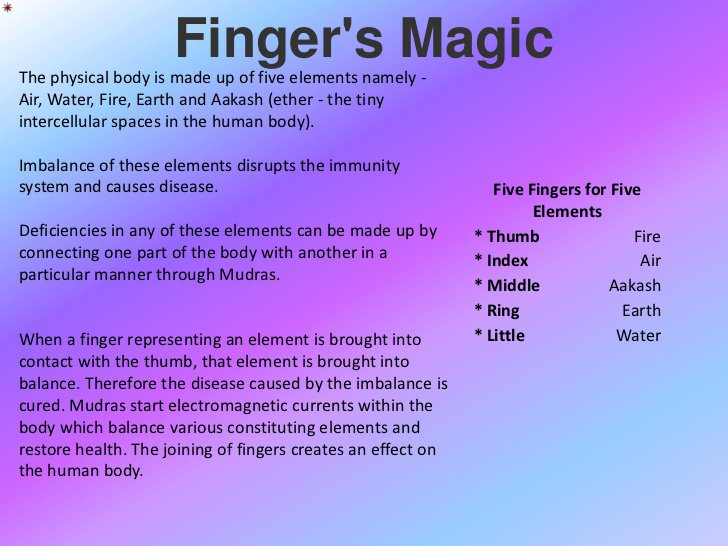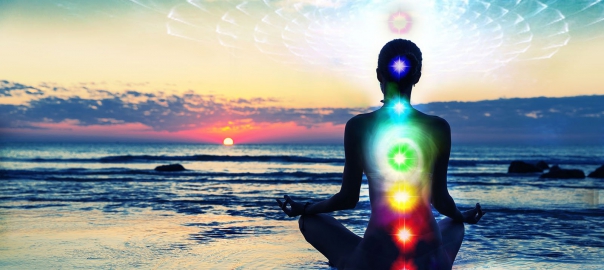Health at Your Fingertips – Mudras
A mudra is used in yoga, Buddhism, Hinduism, and Jainism as a sacred and symbolic gesture. The most well-known mudras are used as a way of channeling the flow of essential life force energy known as prana during yoga and meditation practice. The term translates as “gesture,”‘ “mark” or “seal” that is derived from Sanskrit.
Although they have been around for thousands of years and have appeared in various religions and cultures, including Christianity, Egyptian hieroglyphics, Tantric rituals, Roman art, Asian martial arts, Taoism and classical Indian dance, the exact origins of mudras are unknown.
Table of Contents
History and Origin of Mudras
The use of mudras in India goes back to antiquity. Ritual Mudras “can be traced back to Vedic times when in the chanting of the Vedas they were used to manage vibration, rhythm, and intonation.” With the advent of Classical Hinduism, mudras continued to play a role in the ritual offerings to deities, and in the visual representation of various gods and goddesses, as well as classical Indian dance like Bharatnatyam and Kathak. They are used in Bharatnatyam to tell religious tales through the body gestures and hand placements of the dancers.
In order to intensify the effects of spiritual practices, mudras are believed to have a strong influence on prana and are thus usually practised alongside pranayama or meditation. Postures such as Padmasana (Lotus Pose), Vajrasana (Thunderbolt Pose), or Sukhasana (Easy Pose) are used to accompany Hasta mudras.
In India and Asia, Hindu, Buddhist, and Jain iconography use mudras extensively to express deeper truths. In poses that make unique movements with their hands, one often sees statues of Buddha or Hindu deities. These mudras are a type of nonverbal symbolic language that is communicated to the practitioner by the icon.
Mudras symbolize the unity of knowledge and compassion, male and female, in the Vajrayana Schools of Buddhism, and are seen as central to Buddhist tantric practices.
Significance of Mudras
The purpose of these hand gestures can vary from focusing subtle energy, transmitting teaching through symbols, acting as a healing tool, even attributing magical powers and psychic skills to the practitioner. Mudras are, however, fundamentally a means of non-verbal communication, an ‘external expression of inner resolve.’
Yoga and Ayurveda exist on the foundation of five elements and they believe that everything in the universe including human beings is made up of these elements.
Any imbalances in any of these elements cause various diseases and health conditions. As the thumb represents the fire element, and the fire has transformative property, we use the thumb to balance the other elements in the body.
Mudras establish a subtle link with the brain’s instinctual patterns and affect the unconscious reflexes in these regions. In exchange, the inner energy is balanced and redirected, affecting the sensory organs, glands, veins and tendons.
Most Commonly Used Mudras
Coming to this point, we are almost clear that our health is literally in our hands. Let’s dive into basic and commonly used mudras. We shall also look into the benefits of each one of them. Each of the Hasta-Mudras is recommended to be done for at least ten to twelve deep Ujayai breathe.
Chin Mudra
- Extend the index, middle and small fingers, and hold the thumb and index finger together gently. The thumb and index finger, without exerting any pressure, just need to touch firmly.
- The three extended fingers should be as straight as possible.
- The hands can then be positioned facing upwards on the thighs.
- Observe the flow of breath and sensations in the body.
Benefits
- Improves sleep patterns and works wonderfully on back pain.
- This mudra connects us to our higher consciousness, helps to raise dull energies, induces a more receptive state, calms the mind, and rejuvenates the mood in general.
Chinmaya Mudra
- Make a small circle bringing in the tip of the thumb with an index finger.
- Curl the remaining three fingers into a loose fist.
- The hands can then be positioned facing upwards on the thighs.
- Observe the flow of breath and sensations in the body.
Benefits
- Helps in digestion and weight loss.
- The practice of Chinmaya Mudra is said to help with improved memory when performed for a longer period and in the correct time and correct manner.
Adi Mudra
- The thumb rests over the base of the small finger.
- Remaining fingers are curled over the thumb to form a gentle fist.
- The palms are then placed on thighs and breathing repeated.
Benefits
- Increases the capacity of the lungs and improves the flow of oxygenated blood to the head.
- Calms down the nervous system and stimulates the sensory system.
- Helps in balancing yoga asana called Vrikshasana (Tree Posture.)
Aakash Mudra
- Put the back of your palms on both of the knees. Fold the middle finger gradually and press it gently against the thumb.
- Now, stretch the rest of your fingers as far as possible.
Benefits
- A study concluded that yoga practices like mediation with Akash mudra positively affects the Agya chakra (hypothalamic-cerebral system of the brain), thus helping condition like Migraine.
- Helps in Sinusitis and hearing disorders.
Dhyana Mudra
- Place your left hand on your lap, facing your palm upwards.
- Now, put the palm of your right hand over the palm of your left hand, holding your palm upward.
- Touch the tips of the thumbs of both hands together. This, with your hands and thumb, will form a triangle-like shape.
- Close your eyes softly now, and take long, slow breaths.
Benefits
- Helps in deepening the meditation practise.
- Brings balance between the left and right side of the brain.
- The shape of the triangle formed represents three jewels in Buddhism, the master, the teachings and community.
Advancing the Mudra Practise
There are several mudras in Hatha yoga that include the inner actions of the throat, eyes, tongue, belly, diaphragm, pelvic floor, genitals, anus, and other body parts. These mudras include mula bandha, maha mudra, viparita karani, vajroli mudra, and khechari mudra, and, in addition to prana, are said to influence the flow of bindu (male psycho-sexual energy) and amrita (immortality nectar).














